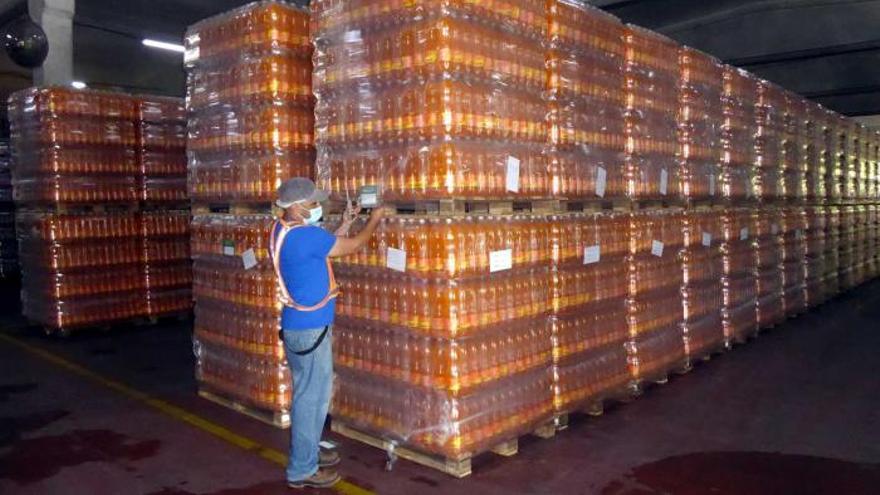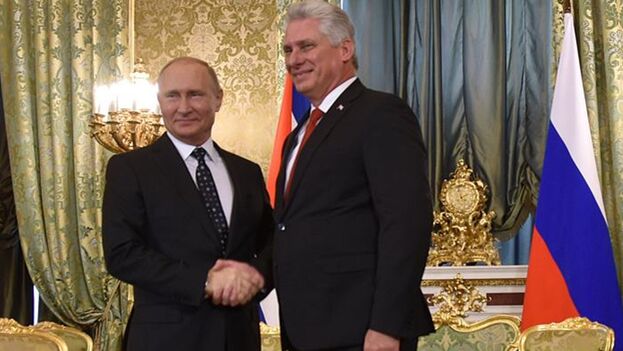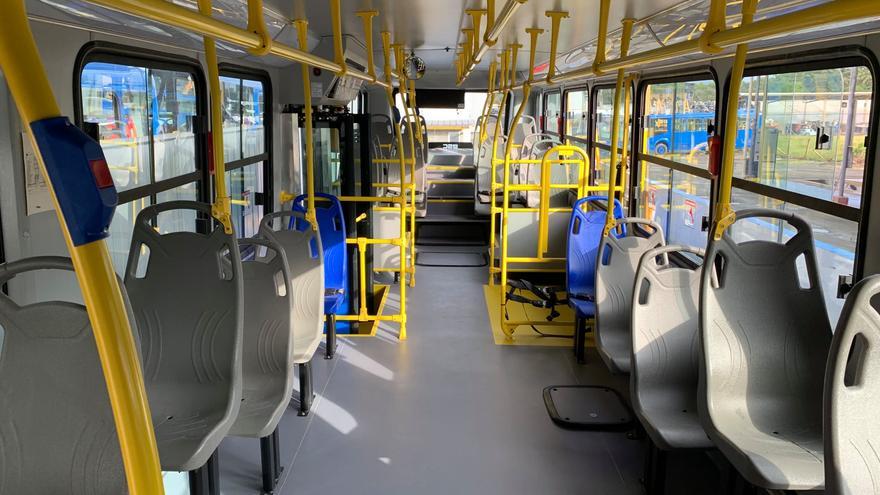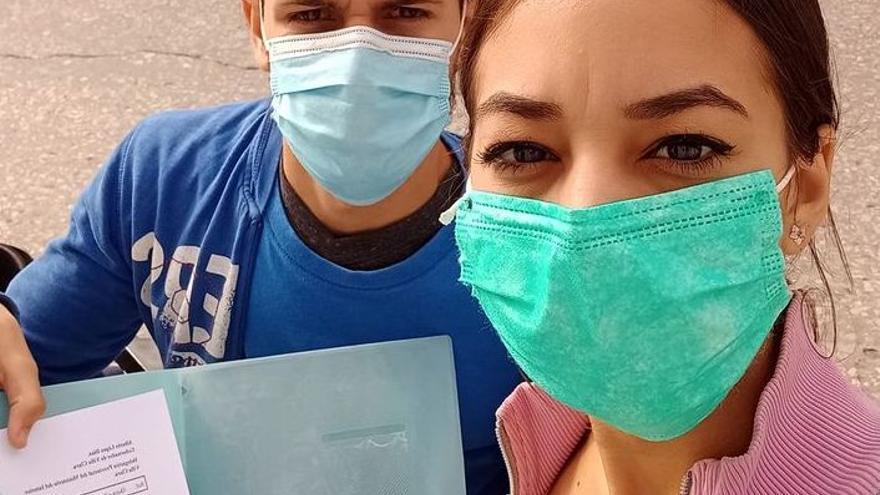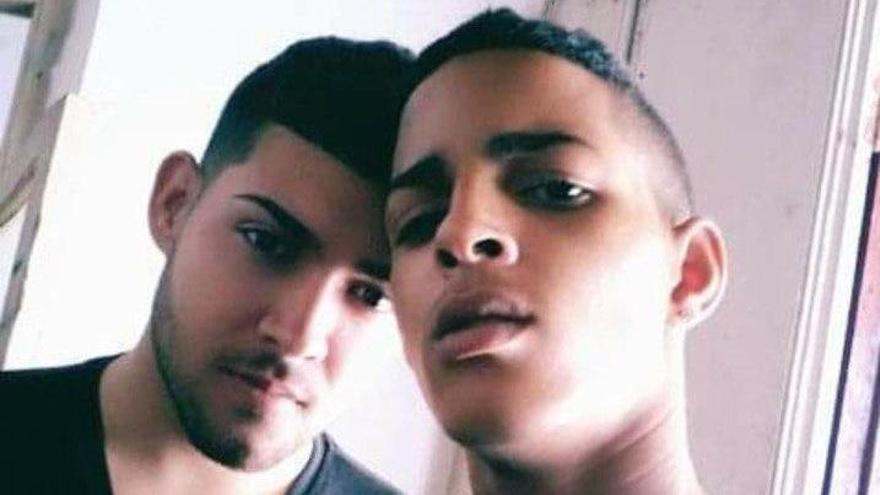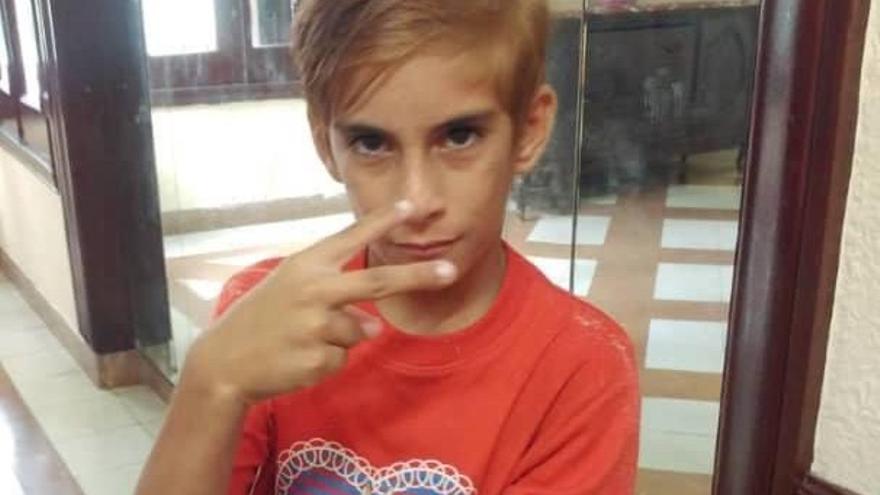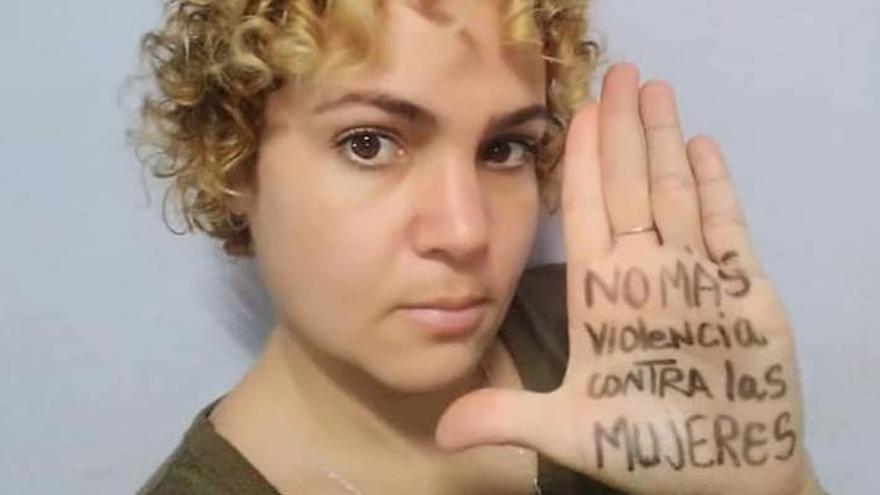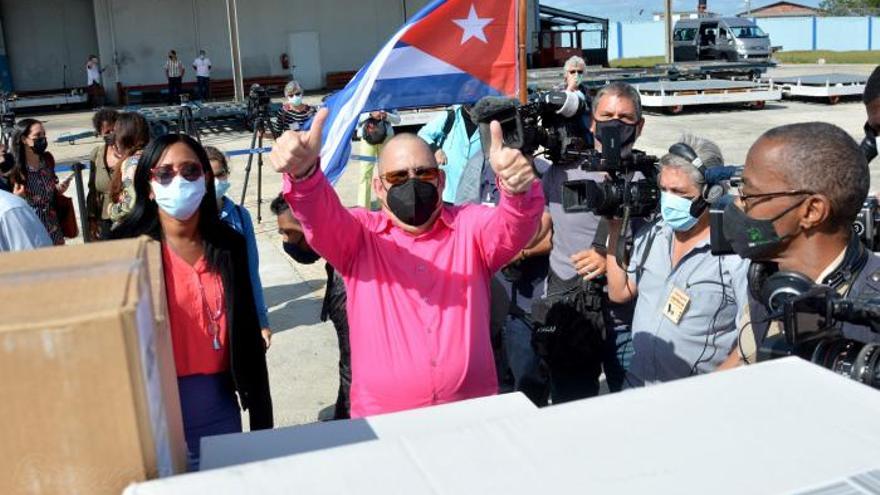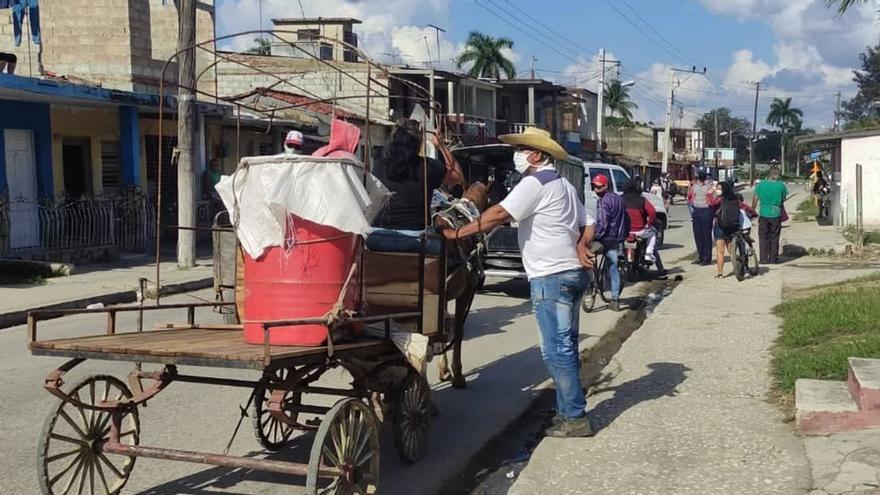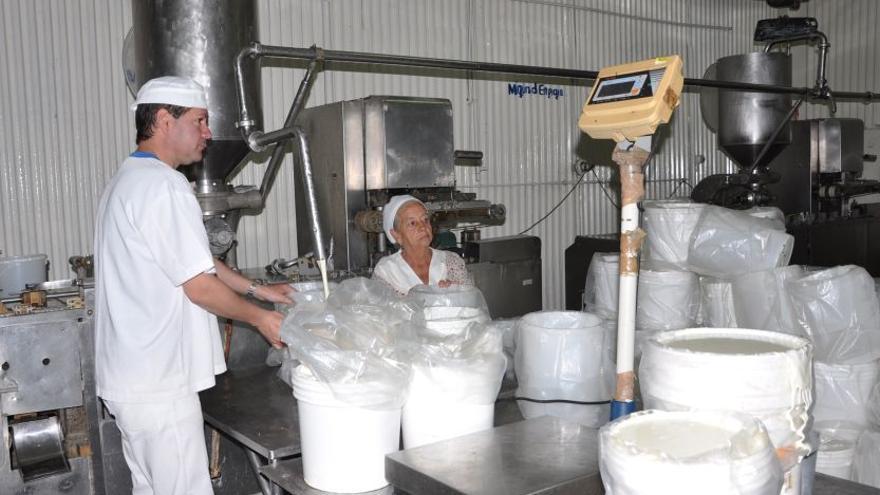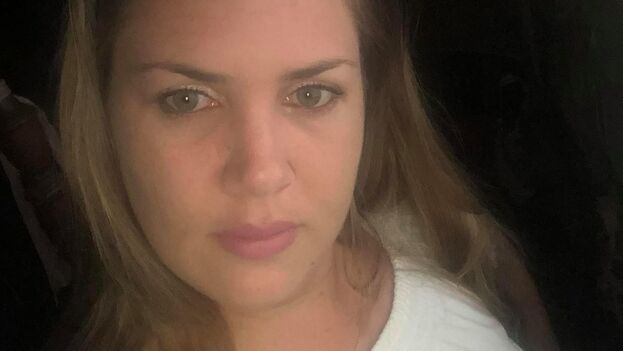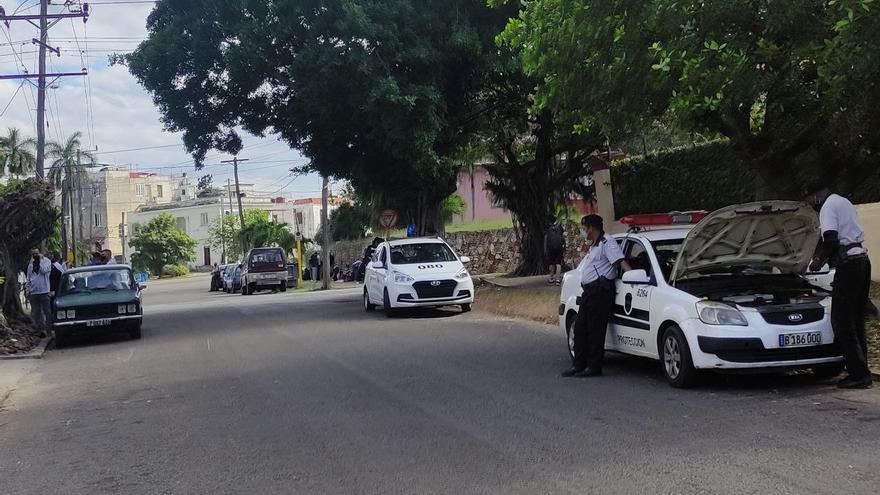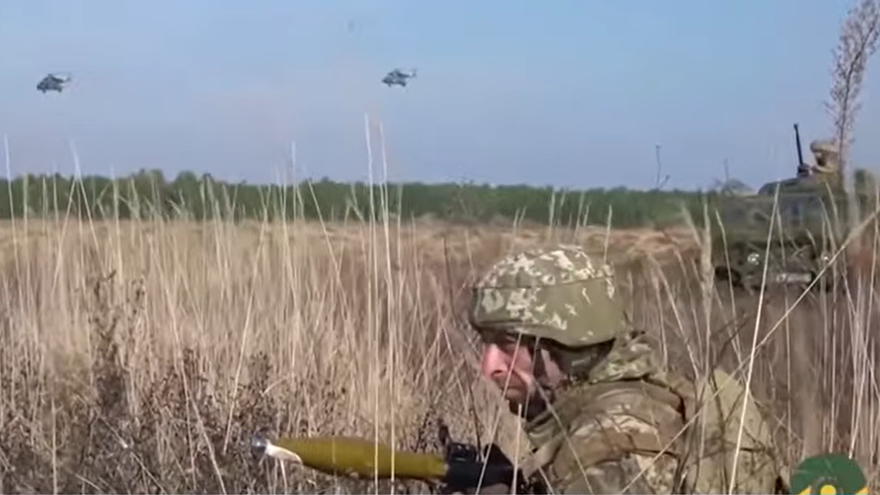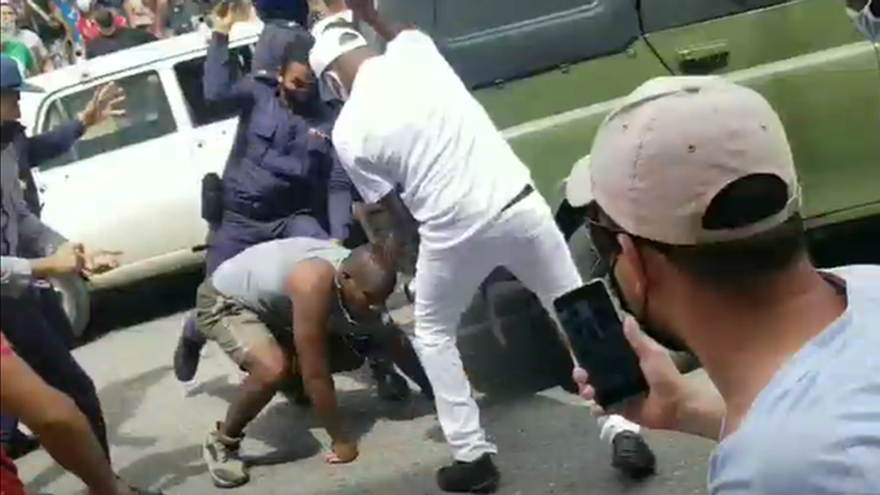
![]() 14ymedio, Havana, January 21, 2022–Five political prisoners, of those detained for the popular protests on July 11th (11J), are on a hunger strike. Luis Manuel Otero Alcántara, William Manuel Leyva Pupo, Yosnavy Rosell García, Cruz García Domínguez, and Chadrían Vila Sequin are refusing to ingest food, demanding their immediate release, reported Justicia 11J on Friday.
14ymedio, Havana, January 21, 2022–Five political prisoners, of those detained for the popular protests on July 11th (11J), are on a hunger strike. Luis Manuel Otero Alcántara, William Manuel Leyva Pupo, Yosnavy Rosell García, Cruz García Domínguez, and Chadrían Vila Sequin are refusing to ingest food, demanding their immediate release, reported Justicia 11J on Friday.
On its Facebook page, Justicia 11J provided updated details about the upcoming trials of 39 J11 protesters, which will take place between January 24th and the 28th. Among the crimes for which they are accused are “sedition, sabotage, public disorder, contempt, assault, and sexual insult,” it states.
The platform [Justicia 11J] denounces that in the trials to date, “we have identified the same patterns: police operations at the tribunals where the trials are held behind closed doors.” A cordon [blocking access to the court], which “constitutes a violation of the right to due process, and an assault on transparency of the judicial proceedings.”
“The authorities only allow one family member per defendant to be present at the trial,” explains Justicia 11J. Activists call upon the prosecutors and judges to guarantee, “justice for the more than one thousand people who ended up arbitrarily detained and who are being subjected to torture, cruel, inhumane and degrading treatment for exercising their right to protest.” continue reading
In order to restore the rights of those arrested that day, Justicia 11J proposes dropping “the charges for which there is no evidence,” dismissing “the cases against protesters which have yet to be charged,” and acquitting those who have been tried, “but who have not yet been sentenced.”
“In the cases of those who have been convicted, but not yet sentenced, promote ex oficio appeals and declare the protesters absolved,” adds the document. “Promote ex officio revision of the proceedings,” and “initiate an investigation against agents of the Ministry of the Interior and the Revolutionary Armed Forces who used excessive force,” were the other recommendations.
The platform [Justicia 11J] reiterates its demand that the Island permit entry to “international organizations such as Amnesty International and the Inter-American Commission on Human Rights, so they may inspect the state of detention centers across the country.” They also joined the #UEenCubaMiraLasPrisiones [European Union in Cuba Look at the Prisons] campaign, targeting European diplomats in Cuba.
With a demand that foreign press credentialed in Cuba be present at the trials, Justicia 11J completed its report on Friday. The document is accompanied by a list, by province, of the trial dates and the names of protesters who will be tried, their age, and the sentences sought by the prosecutor’s office:
January 24th and 25th, prosecutor Idania Miranda Ferrer, People’s Municipal Tribunal of Jovellanos, Matanzas:
1. Félix Navarro Rodríguez (68), 15 years
2. Saily Navarro Álvarez (35), 11 years
3. Daymelin Abreu Rodríguez (20), 7 years
4. Odrey Rodríguez Lanz (30), 11 years
5. Adrián Echegoyen Espiñeira (25), 7 years
6. Cristian Carlos Contreras Matos (24), 16 years
7. Yoandy Ripoll Smith (32), 16 years
8. Yanelys Rosabal Milanés (36), 9 years
9. Mildrey Mederos Soca (44), 9 years
January 24th, 25th and 26th, prosecutor José Mayo González, Municipal Tribunal of Diez de Octubre, Havana (sedition):
10. Carlos Alberto Hernández Pérez (23), 26 years
11. Elian Seguí Cruz (21), 21 years
12. Mackyanis Román Rodríguez (23), 25 years
13. Juan Piloto Ferro (58), 21 years
14. Alejaime Lambert Reyes (22), 26 years
15. Lázaro Daniel Cremé Bueno (21), 21 years
16. Arielvis Rill Baró (30), 25 years
17. Amaury Fernández Martínez (33), 21 years
18. Rolier Salazar González (36), 21 years
19. Luis Miguel Oña Jiménez (23), 21 years
20. Yaquelin Castillo García (49), 20 years
21. José Luis Castillo De La Torre (56), 25 years
22. Andrius López Fragosa (29), 25 years
23. Liliana Oropesa Ferrer (20), 19 years
24. Dayan Jesús Ramírez Rondón (23), 25 years
25. Osvaldo Lugo Pita (34), 21 years
26. Wilfredo Limonta Mesa (20), 21 years
27. Yurema Ramos Abad (25), 25 years
28. Eris Diógenes Mejías Vinent (21), 25 years
29. Juan Walberto Verdecia Rodríguez (48), 25 years
30. Germán Barrenechea Echevarría (24), 25 years January 25th and 26th, prosecutor Yerandy Calzadilla Dávalos, Municipal Tribunal of Quivicán, Mayabeque:
31. Jorge Martín Perdomo (38), 10 years
32. Nadir Martín Perdomo (37), 8 years
January 26th, prosecutor Daylet Fuentes Morales, Municipal Tribunal of San José de las Lajas, Mayabeque:
33. Angel Miguel Martín Caro (50), 12 years
34. Jorge Luis Reynoso Barrios (21), 6 years
35. Omar Valenciano Donatien (25), 6 years
36. Raul Xavier Díaz Pérez (17), 5 years
37. Alain Yamil Sánchez Baluja (21), 7 years
38. Livan Viel de la Peña (19), 7 years
39. Abel González Lescay (23), 7 years
Justicia 11J also explained that of “the 1,379 people arrested in connection with the protests on July 11th, at least 727 remain in detention centers, 71 of them are women and 15 are minors younger than 18 years of age.
Of the 613 people who have been released, many are awaiting trial and were either released on bail as a precautionary measure or are under house arrest.
“A total of 158 people are being tried or have been tried for sedition and 40, for sabotage. Of the 93 people arrested in connection with the Civic Day for Change, on November 15th, nine remain in detention.
Unedited images of the protests on July 11, 2021, in Havana.
Translated by: Silvia Suárez
____________
COLLABORATE WITH OUR WORK: The 14ymedio team is committed to practicing serious journalism that reflects Cuba’s reality in all its depth. Thank you for joining us on this long journey. We invite you to continue supporting us by becoming a member of 14ymedio now. Together we can continue transforming journalism in Cuba.

